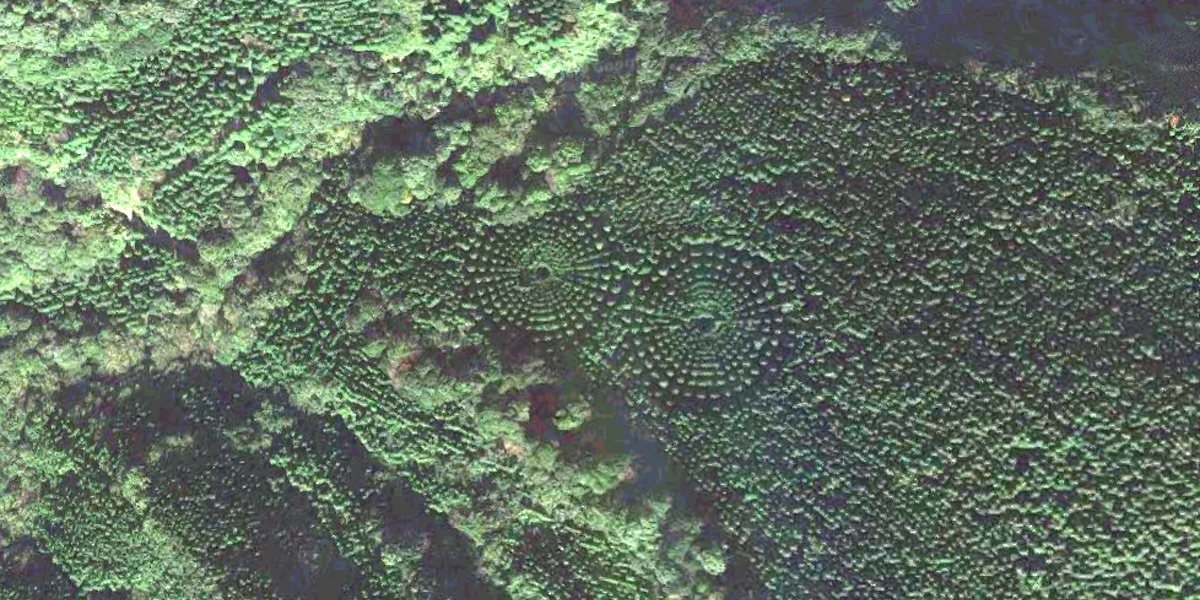
Tree ‘Crop Circles’ Emerge in Japan, Results From 1973 Forestry Experiment

Photos of two “crop circles” of trees in Japan’s Miyazaki prefecture have emerged online and on social media, causing netizens to marvel at the eerie forest formation.
Turns out, these cedar circles—which you can see on
Google Earth—are the result of a forestry experiment conducted about 45 years ago.
The Japanese design and culture blog
Spoon & Tamago explains:
According to documentation (PDF) we obtained from Japan’s Ministry of Agriculture, Forestry and Fisheries, in 1973 an area of land near Nichinan City was designated as “experimental forestry” and one of the experiments was to try and measure the effect of tree spacing on growth. The experiment was carried out by planting trees in 10 degree radial increments forming 10 concentric circles of varying diameters.
Look closely at the photos and you’ll notice that the height and size of the trees expands taller and bigger from the inner circle.
The height difference between the tallest tree and the shortest tree is about 5.3 meters, the document from Japan’s Ministry of Agriculture, Forestry and Fisheries shows.
#Japan gov planted circles of cedars near Nichinan City in Miyazaki Prefecture in circles expanding incrementally into larger radius to test forest growth years later they are amazing forest circles. #forest #green @arborsmarty pic.twitter.com/ckVPXdGq4n
— Emporiago (@emporiago) December 21, 2018
“Makes sense right? More space equals less competition for resources such as water and sunlight, so it’s easier for these outer trees to grow bigger and stronger while those on the inside fight it out amongst themselves,” writes Bored Panda.
This 3D Google Earth map shows that this experiment was even conducted on a slope.
Officials were planning to harvest the trees in about five years, but they are now thinking about preserving the circles given the new interest in them, according to Spoon & Tamago.

 233k
233k  41k
41k  Subscribe
Subscribe 